Augusta Stylianou Gallery

<-----===========------->
Loading
|
Peter Paul Rubens
Paintings
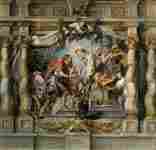
Abraham Offers Tithes to Priest-King Melchizedek of Salem
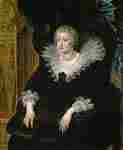
Anna of Habsburg, Queen of France
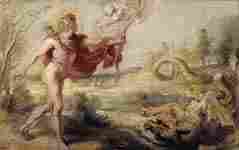
Apollo and Python
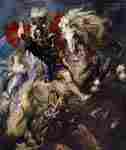
Battle of St. George with the dragon
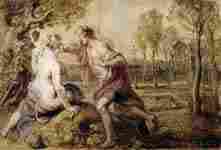
Vertumnus and Pomona
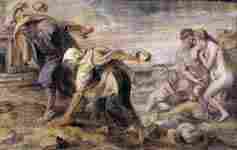
Deucalion and Pyrrha

Vulcan forges Jupiter's thunder
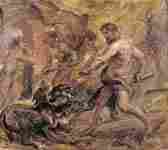
Hercules and Cerberus
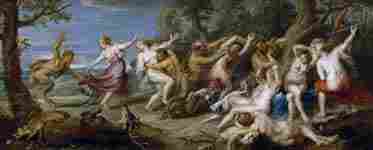
Diana and her Nymphs Surprised by the Fauns
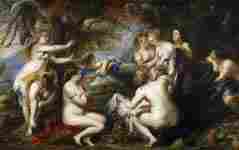
Diana and Callisto
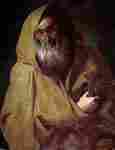
St James the Minor
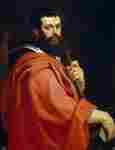
St James the Apostle
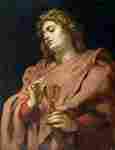
St. John the Evangelist
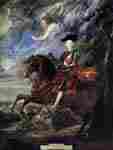
Cardinal-Infante Fernando de Austria at the Battle of Nördlingen
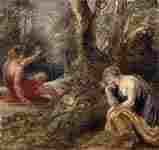
Cephalus and Procris
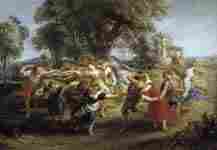
Peasant Dance
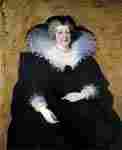
Portrait of Marie de Medici, the Queen Mother of France

Mercury
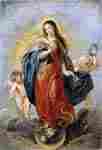
Immaculate Conception
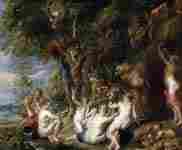
Nymphs and Satyrs
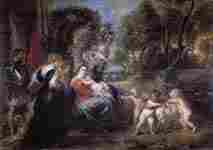
Rest on the Flight into Egypt with Saints
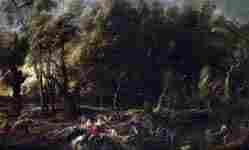
Atalanta and Meleager hunting the Calydonian Boar
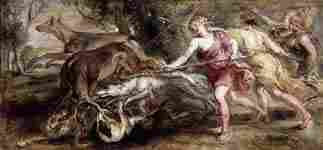
Diana and her Nymphs, Hunting
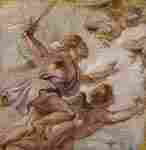
The pursuit of the Harpies
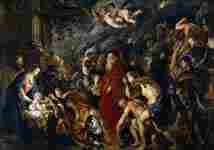
Adoration of the Magi

The Rape of Ganymede
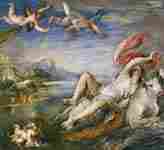
The Rape of Europa (a copy of Titian)
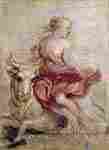
The Rape of Europa

Prometheus
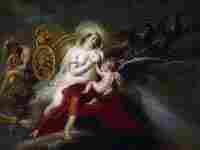
The Birth of the Milky Way
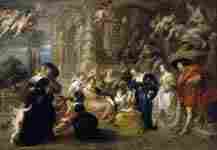
The Garden of Love

Saturn devouring his child
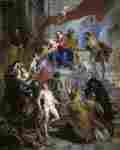
Holy Family with Saints
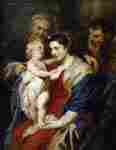
The Holy Family with St. Anne
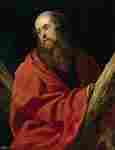
St. Andrew
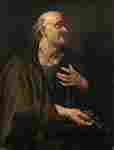
Saint Bartholomew
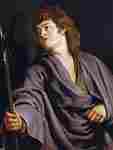
St. Matthew
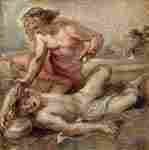
The Death of Hyacinth
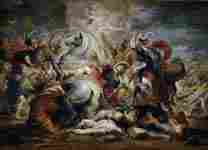
The death of the consul Decius
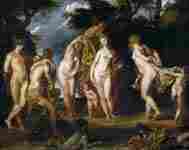
The Judgement of Paris
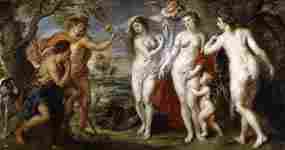
The Judgement of Paris
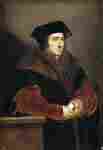
Portrait of Sir Thomas More
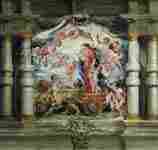
Triumph of Divine Love
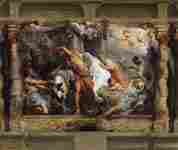
Triumph of the Eucharist over Idolatry
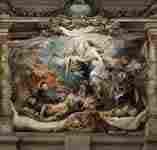
Triumph of the Catholic truth
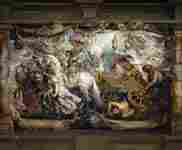
Triumph of the Church
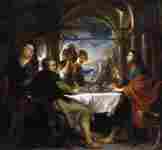
The Supper at Emmaus
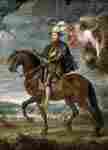
Philip II on horseback
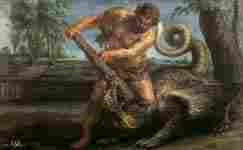
Hercules killing the dragon of the garden of the Hesperides
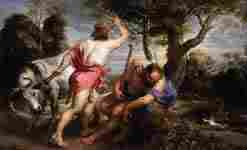
Mercury and Argus
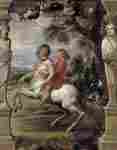
Education of Achilles
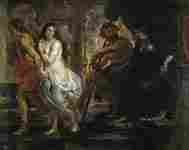
Orpheus and Eurydice
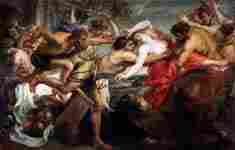
The Rape of Hippodamia
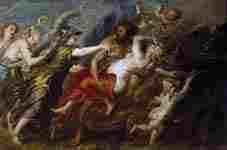
The Rape of Proserpina

Satyr

Democritus
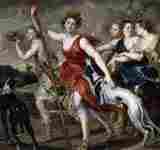
Diana the Huntress
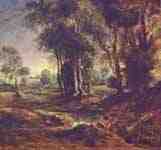
Evening Landscape
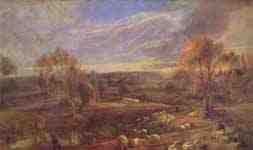
Evening Landscape with Shepherd and flock
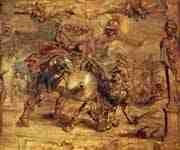
Achilles defeates Hector

Perseus Freeing Andromeda
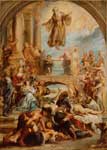
The Miracles of Saint Francis of Paola

Abundance (Abundantia)
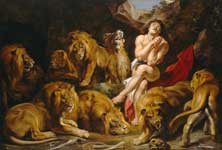
Daniel in the Lions' Den
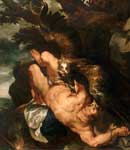
Prometheus Bound
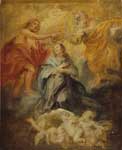
The Coronation of the Virgin
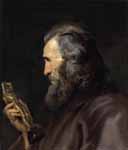
A bearded man in profile holding a bronze figure
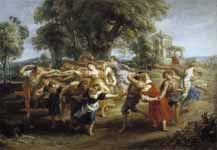
A Peasant Dance
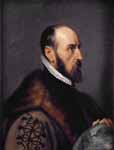
Abraham Ortelius
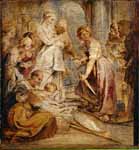
Achilles and the Daughters of Lykomedes
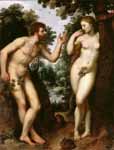
Adam and Eve
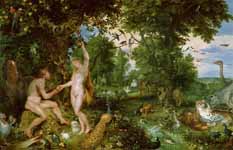
Adam and Eve in Worthy Paradise
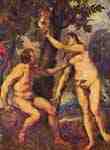
Adam and Eve
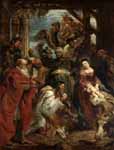
Adoration of the Magi
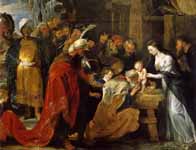
Adoration of the Magi
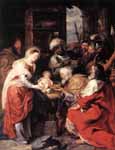
Adoration of the Magi
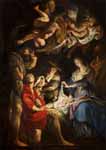
Adoration of the Shepherds
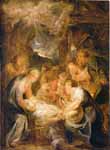
Adoration of the Shepherds
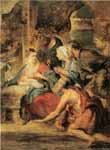
Adoration of the Shepherds

Adoration of the Shepherds
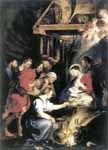
Adoration of the Shepherds
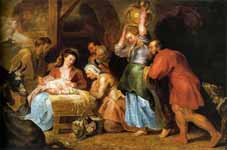
Adoration of the Shepherds
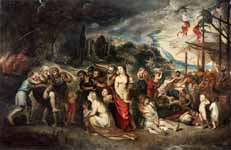
Aeneas And His Family Departing From Troy
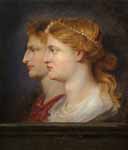
Agrippina and Germanicus

Albert and Nicolaas Rubens
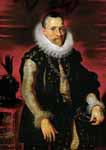
Albert VII, governor of the Southern provinces
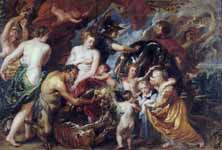
Allegory of Peace - Peace And War
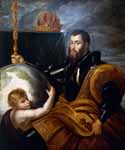
Allegory on Charles V of Habsburg (1500-1558) as Ruler of the World

Altarpiece of St Ildefonso (right panel)
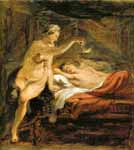
Amor and Psyche
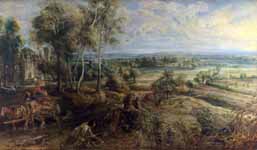
An Autumn Landscape with a View of Het Steen
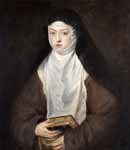
Ana Dorotea, Daughter of Rudolph II, a Nun at the Convent of the Descalzas Reales
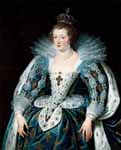
Anna of Austria, Queen of France, mother of king Louis XIV
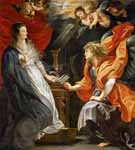
Annunciation

Annunciation
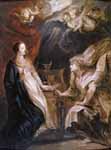
Annunciation
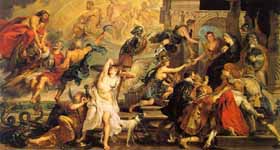
Apotheosis of Henry IV and the Proclamation of the Regency of Marie de Medici

Apotheosis of King James I
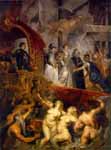
Arrival of Marie de Medici at Marseilles
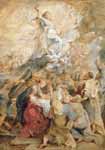
Ascension Of The Virgin Mary

Assumption of the Virgin

Assumption of the Virgin
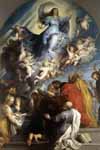
Assumption of the Virgin

Assumption of the Virgin
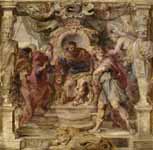
The Wrath of Achilles
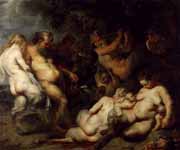
Bacchanalia
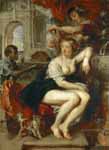
Bathsheba at the Fountain
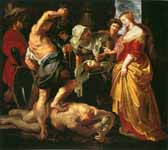
Beheading of St John the Baptist
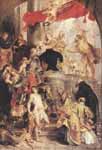
Bethrotal of St Catherine (sketch)
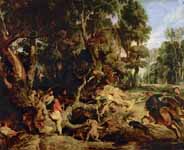
Boar Hunt
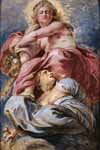
Bounty of James I triumphing over Avarice
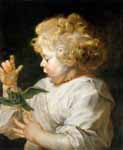
Boy with Bird
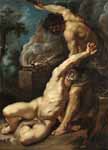
Cain slaying Abel
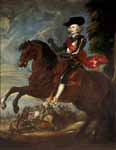
Cardinal-Infante Ferdinand on horseback in the Battle of Noerdlingen
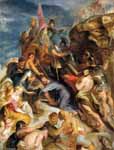
Carrying the Cross

Carrying the Cross
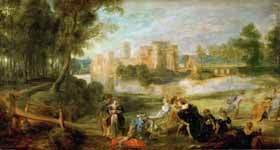
Castle Garden
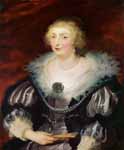
Catherine Manners, Duchess of Buckingham
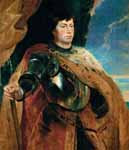
Charles the Bold, duke of Burgundy
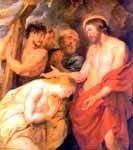
Christ and Mary Magdalene
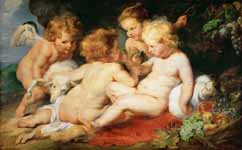
Christ and St. John the Baptist as Children with two Angels
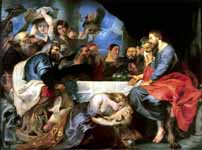
Christ at Simon the Pharisee
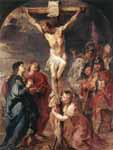
Christ on the Cross
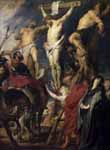
Christ on the Cross between the Two Thieves

Christ on the Cross
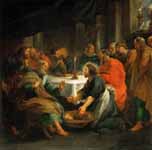
Christ washing the apostles’ feet
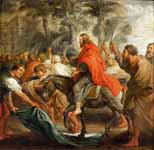
Christ’s entry into Jerusalem
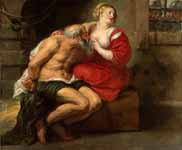
Cimon and Pero
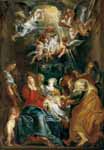
Circumcision of Christ
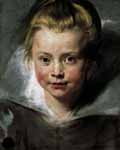
Clara Serena Rubens
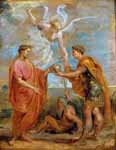
Constantius appoints Constantine as his successor
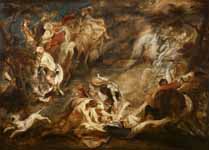
Conversion of Saint Paul
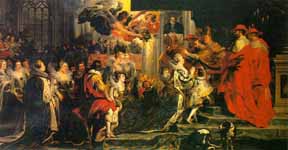
Coronation of Marie de Medici
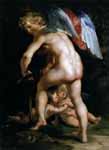
Cupid, the bow
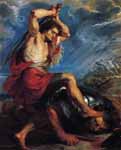
David Slaying Goliath

The Conversion of Saint Bavo
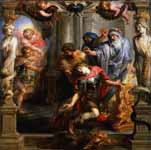
Death of Achilles
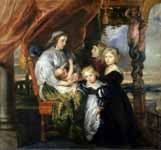
Deborah Kip, Wife of Sir Balthasar Gerbier, and Her Children
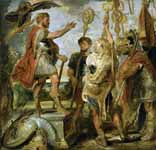
Decius Mus Addressing the Legions

Deianeira Tempted by Fama
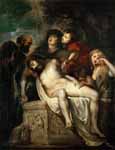
Deploration
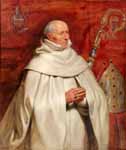
Matthaeus Yrsselius Abbot Of Sint-michiel's Abbey In Antwerp
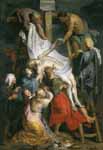
Descent from the Cross
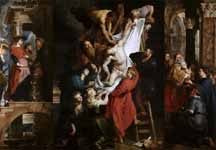
Descent from the Cross
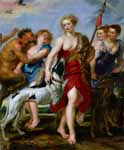
Diana and Her Nymphs Departing for the Hunt
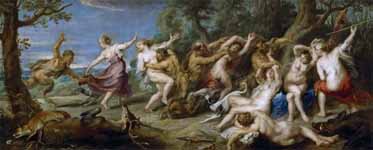
Diana and her Nymphs Surprised by the Fauns
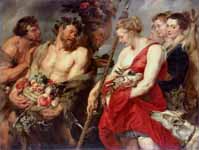
Diana Returning from Hunt
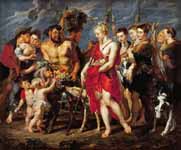
Diana Returning from Hunt
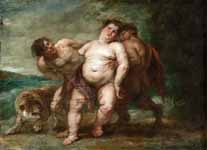
Drunken Bacchus with Faun and Satyr
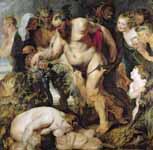
Drunken Silenus
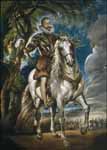
Duke of Lerma
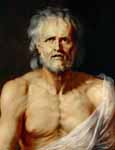
Dying Seneca
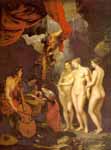
Education of Marie de Medici
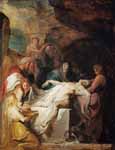
Entombment of Christ

Equestrian Portrait of Giancarlo Doria
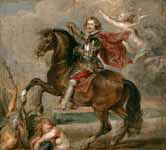
Equestrian Portrait Of The Duke Of Buckingham
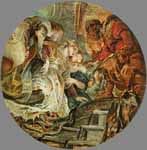
Esther and Ahasuerus
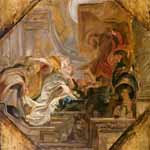
Esther before Ahasuerus
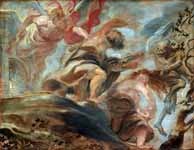
Expulsion from the Garden of Eden
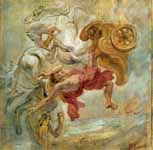
Fall of Phaeton
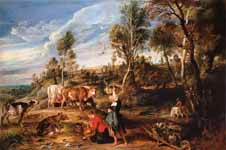
Farm at Laken
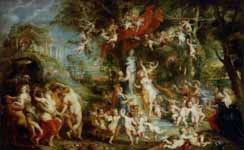
Feast of Venus
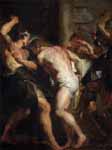
Flagellation of Christ
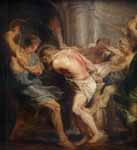
Flagellation of Christ
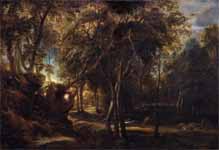
Forest Landscape at the Sunrise
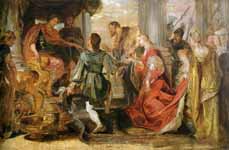
Generosity of Scipio
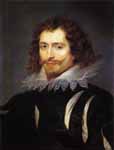
George Villiers, Duke of Buckingham
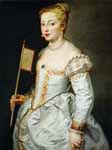
Girl with fan
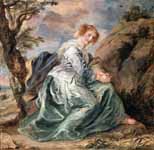
Hagar in the Desert
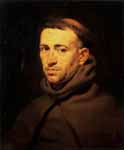
Head of a Franciscan Friar
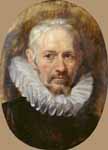
Head of an Old Man
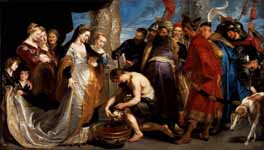
Head of Cyrus Brought to Queen Tomyris
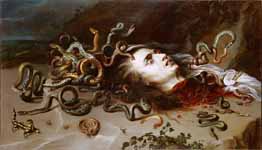
Head of Medusa
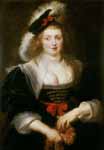
Helena Fourment
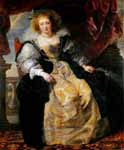
Helena Fourment

Helena Fourment with a Carriage
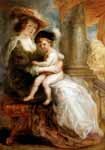
Helena Fourment with her Son Francis
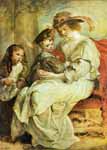
Helene Fourment with her Children
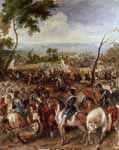
Henry IV at the Battle of Martin d’Eglise
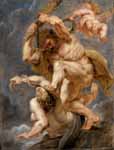
Hercules as Heroic Virtue Overcoming Discord
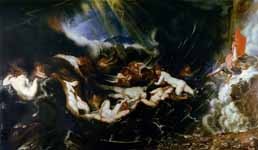
Hero and Leander
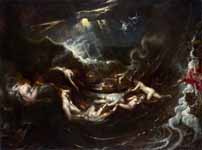
Hero and Leander
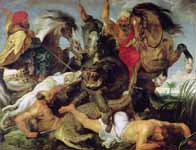
Hippopotamus and Crocodile Hunt
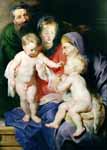
Holy Family with St Elizabeth and St John the Baptist
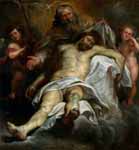
Holy Trinity
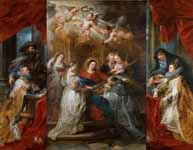
Ildefonso Altar
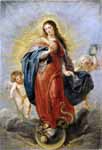
Immaculate Conception
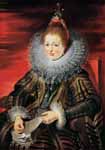
Isabella (1566-1633), Regent of the Low Countries
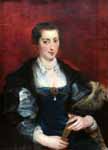
Isabella Brant
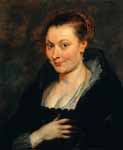
Isabella Brant
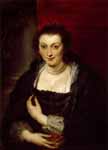
Isabella Brant
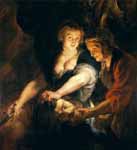
Judith with the Head of Holofernes
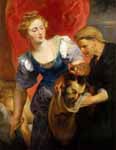
Judith with the Head of Holofernes
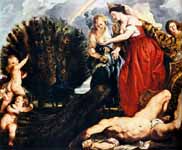
Juno and Argus
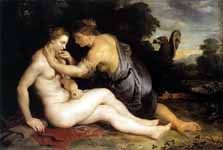
Jupiter and Callisto
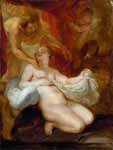
Jupiter and Danae
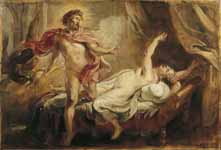
Jupiter et Sémélé
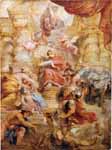
King James I of England
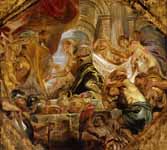
King Solomon and the Queen of Sheba
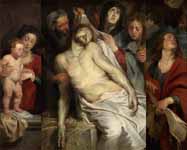
Lamentation (Christ on the Straw)
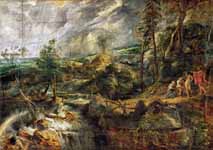
Landscape in a Thunderstorm
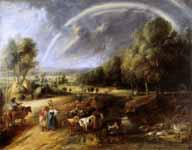
Landscape with a Rainbow
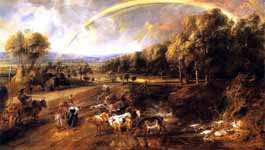
Landscape with a Rainbow
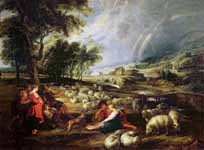
Landscape with a Rainbow
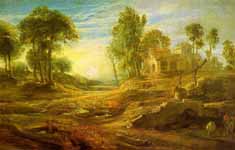
Landscape with a Watering Place
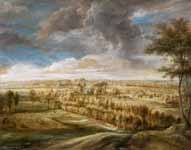
Landscape with an Avenue of Trees
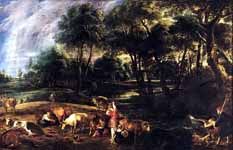
Landscape with Cows and Wildfowlers
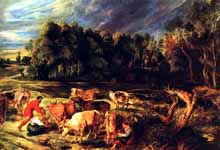
Landscape with Cows
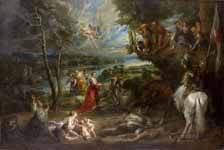
Landscape with Saint George and the Dragon
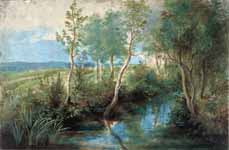
Landscape with Stream Overhung with Trees
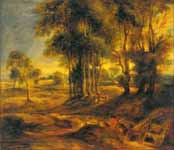
Landscape with the Carriage at the Sunset
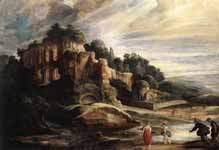
Landscape with the Ruins of Mount Palatine in Rome
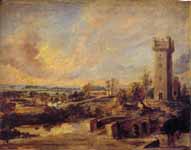
Landscape with Tower
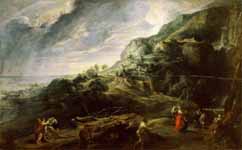
Ulysses and Nausicaa on the Island of the Phaeacians
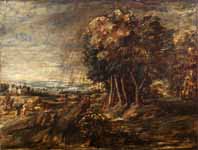
Landscape
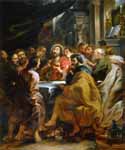
Last Supper
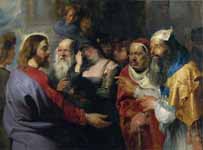
Christ and the adulteress
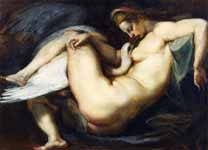
Leda and Swan
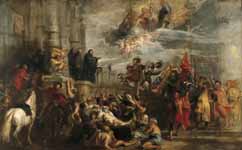
Miracles of St. Benedict
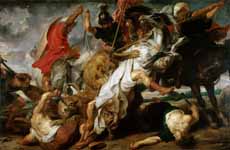
Lion Hunt
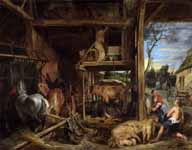
Prodigal Son
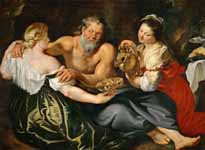
Lot and His Daughters
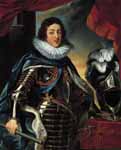
Louis XIII
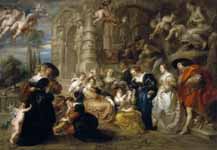
Love Garden

Madonna della Vallicella
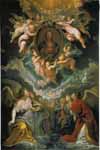
Madonna della Vallicella
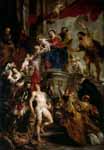
Madonna Enthroned with Child and Saints
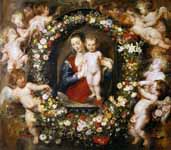
Madonna in Floral Wreath

Marchesa Brigida Spinola Doria

Marie de Medicis as Bellona
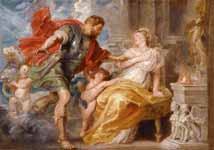
Mars and Rhea Silvia
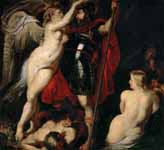
Mars Crowned by the Goddess of Victory

Martyrdom of St Catherine
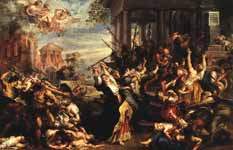
Massacre of the Innocents
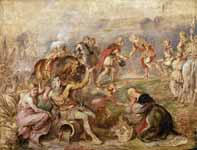
Meeting of King Ferdinand of Hungary and Cardinal-Infante Ferdinand of Spain at Nördlingen
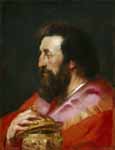
Melchior, The Assyrian King
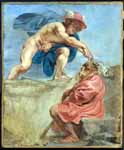
Mercury and a Sleeping Herdsman
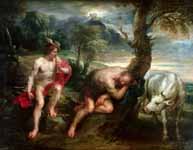
Mercury and Argus
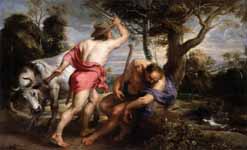
Mercury and Argus
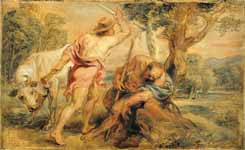
Mercury and Argus
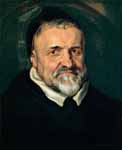
Michel Ophovius
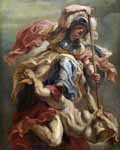
Minerva slaying Discord
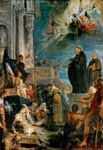
Miracle of St Francis
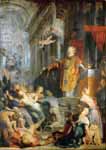
Miracle of St Ignatius of Loyola

Miracles of St Ignatius
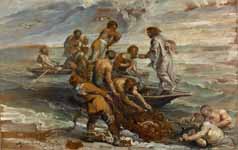
Miraculous Fishing
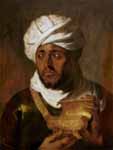
Moorish King (Melchior)
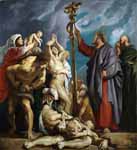
Moses and the Brazen Serpent
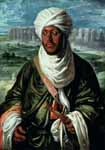
Mulay Ahmad
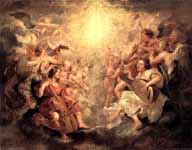
Music Making Angels
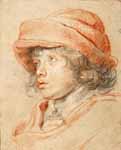
Nicolaas Rubens

Nicolas Trigault
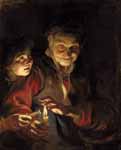
Night Scene
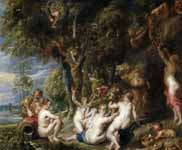
Nymphs and Satyrs
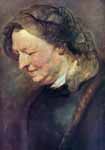
Old woman
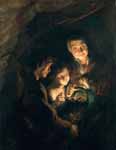
Old Woman with a Basket of Coal
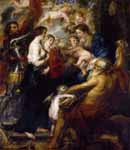
Our Lady with the Saints
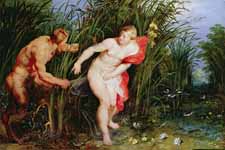
Pan and Syrinx
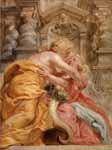
Peace Embracing Plenty
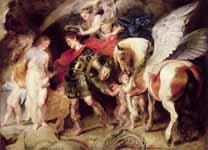
Perseus and Andromeda
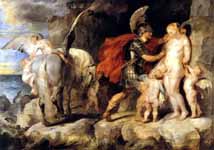
Perseus Freeing Andromeda
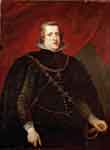
Philip IV of Spain
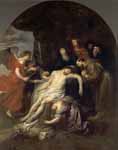
Pietà with Saint Francis
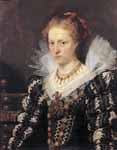
Portrait of Jacqueline van Caestre wife of Jean Charles de Cordes
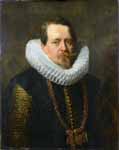
Portrait of Jean Charles de Cordes
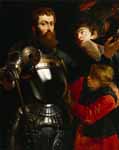
Portrait of a commander, three-quarter-length, being dressed for battle
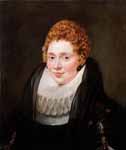
Portrait of a Lady
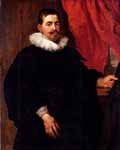
Portrait of a man probably Peter Van Hecke
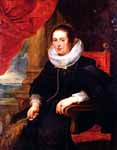
Portrait Of A Woman, Probably His Wife
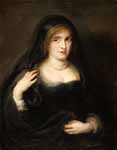
Portrait of a Woman, Probably Susanna Lunden
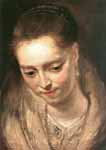
Portrait of a Woman
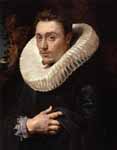
Portrait of a Young Man

Portrait of a Young Scholar
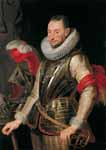
Portrait of Ambrogio Spinola
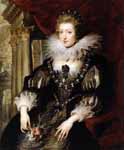
Portrait of Anne of Austria
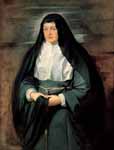
Portrait of Archduchess Isabella Clara Eugenia

Portrait of Helena Forment, second wife of the artist
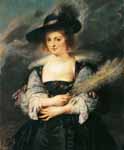
Portrait of Helene Fourment
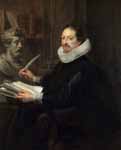
Portrait of Jan Gaspar Gevartius
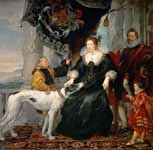
Portrait of Lady Arundel with her Train
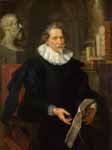
Portrait of Ludovicus Nonnius

Portrait of Maria Serra Pallavicino
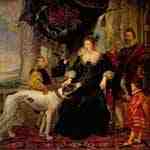
Alathea Talbot , Countess in Shrewsbury
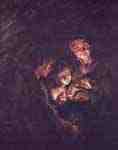
Old woman with a brazier
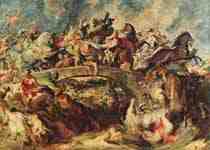
Battle of the Amazons
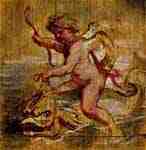
Cupid riding a dolphin
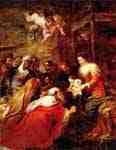
Adoration of the Magi
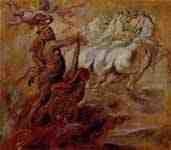
Apotheosis of Hercules
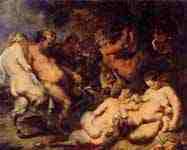
Bacchanal
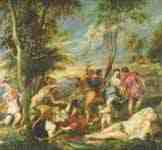
Bacchanal at Andros
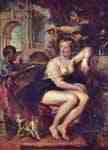
Bathsheba at the Fountain
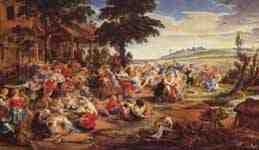
Farmers kirmes (Flemish fair )
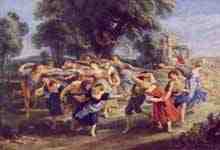
Peasants dance
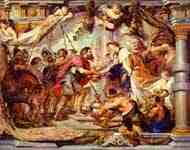
Abraham's encounter with Melchizedek
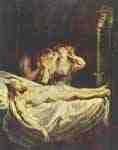
Lamentation of Christ
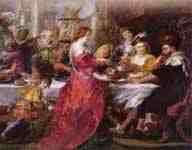
The Feast of Herododes

Fur ( Portrait of Hélène Fourment )
The spear , detail
The spear , detail
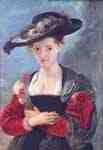
The straw Hat
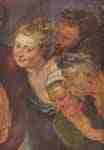
The drunken Silenus , detail
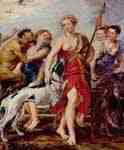
Diana with Nymphs , the departure to the hunting
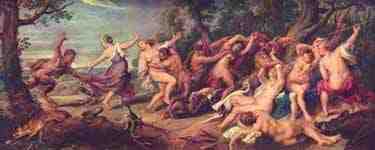
Diana and the nymphs , surprised by fauns
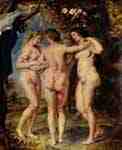
The Three Graces
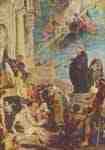
The Miracle of St. Francis Xavier
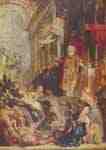
The Miracle of St. Ignatius of Loyola
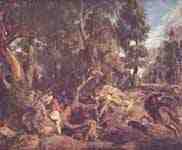
Boar hunt
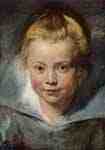
A child's head ( Portrait of Clara Serena Rubens)
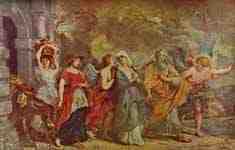
Escape of Lot
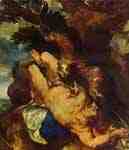
Prometheus Bound
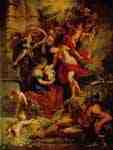
Medici Cycle: Birth of Maria de 'Medici
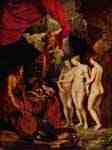
Medici cycle: The Education of Maria
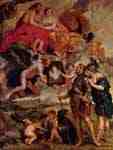
Medici cycle: Henry receives the portrait
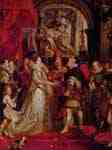
Medici cycle: wedding in Florence
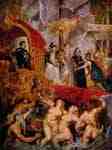
Medici cycle : Arrival of Maria de 'Medici in Marseille
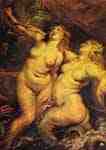
Medici cycle : Arrival in Marseille , detail
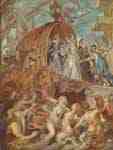
Medici cycle : Arrival in Marseille, sketch
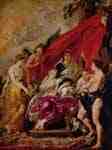
Medici cycle: birth of the Dauphin, Louis XIII .
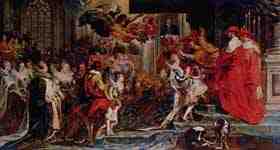
Paintings for Maria de ' Medici , Queen of France , originally for the Palais du Luxembourg , scene: Coronation of Maria de ' Medici in St. Denis in Paris
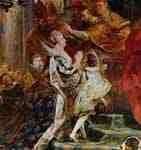
Medici cycle: Coronation of Maria de 'Medici , detail
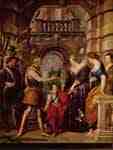
Medici cycle: Maria de ' Medici is regent
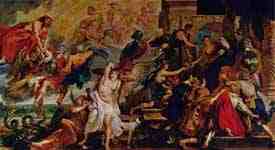
Medici cycle: Apotheosis of Henry IV
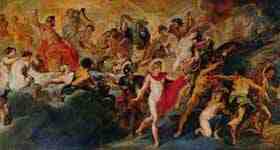
Paintings for Maria de ' Medici , Queen of France , originally for the Palais du Luxembourg , Scene : The Government of the Queen ( Gods Council )
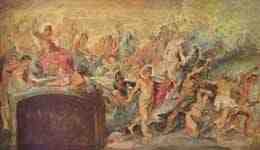
Medici cycle: The flower of France, sketch
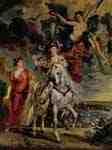
Medici cycle: Taking of Jülich
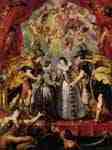
Medici cycle : Exchange of Princesses
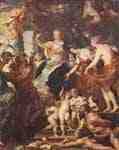
Medici cycle: Bliss of the regency
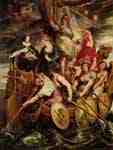
Medici cycle: Coming of age of the Dauphin
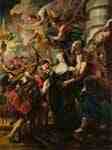
Medici cycle: The queen escapes from Blois
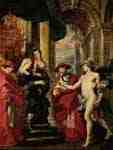
Medici cycle: Treaty of Angoulême
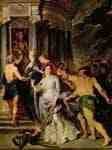
Medici cycle: Peace in Anger
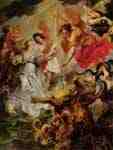
Medici cycle: Reconciliation of Louis and Mary
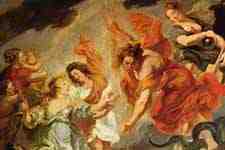
Medici cycle: Reconciliation of Louis and Mary , detail
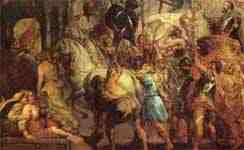
Medici cycle: Entry of Henry IV into Paris , detail
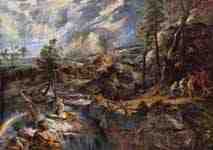
Thunderstorm countryside with Philemon and Baucis
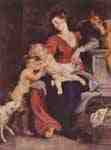
Holy Family with the basket
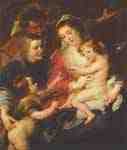
Holy Family with Elizabeth and John
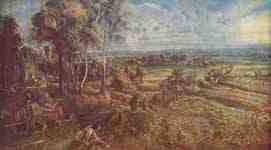
Autumn Landscape
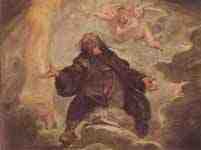
St. Basil
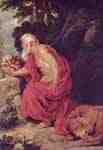
St. Jerome
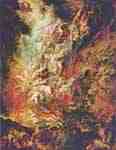
Hell of the Damned
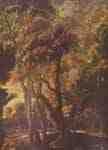
Hunting the Atalante , detail
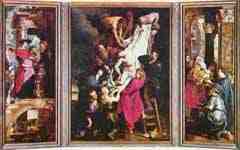
Descent from the Cross , Triptych , overview
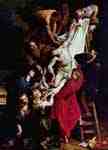
Descent from the Cross : the Cross
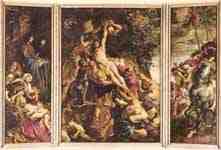
Raising of the Cross , Triptych , overview
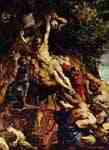
Raising of the Cross : Raising of the Cross
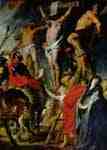
Crucifixion
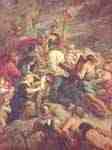
Christ Carrying the Cross
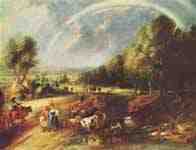
Landscape with the rainbow
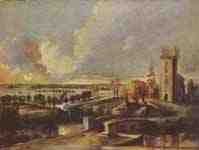
Landscape with the tower of the castle Steen
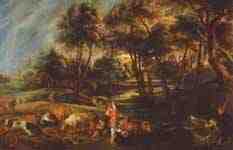
Landscape with cows and ducks hunters
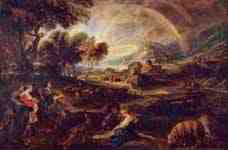
Landscape with rainbow
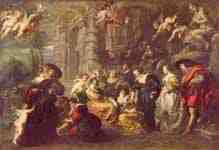
Garden of Love
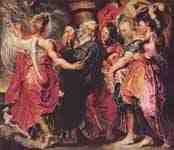
Lot leaves with his family Sodom

Lioness
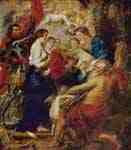
Madonna with Saints

Coronation of the Virgin
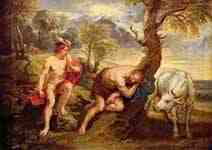
Mercury and Argus
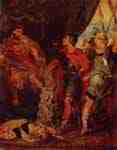
Mucius Scaevola before Porsena
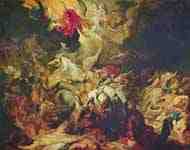
Defeat of Sennacherib
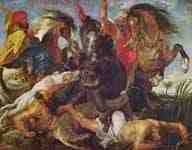
Hippopotamus hunt
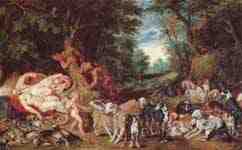
Nymphs , satyrs and dogs
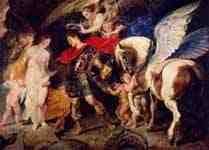
Perseus and Andromeda
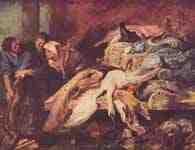
Philopoemen recognized by an old woman
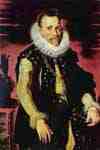
Archduke Albrecht VII
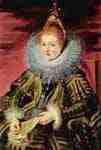
Infanta Isabella Clara Eugenia
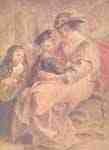
Portrait of the artist's family
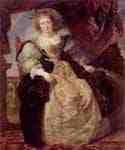
Portrait of Hélène Fourment in a wedding gown
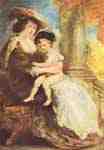
Hélène Fourment with her first-born son
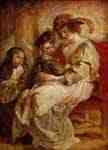
Hélène Fourment with two of her children
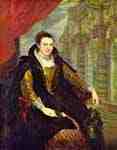
Portrait of Isabella Brandt
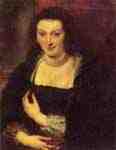
Portrait of Isabella Brandt
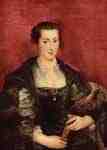
Portrait of Isabella Brant
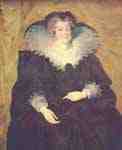
Portrait of Maria de ' Medici
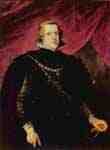
Portrait of Philip IV
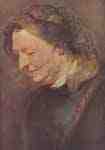
Portrait of an old woman

Portrait of Albert and Nicolas
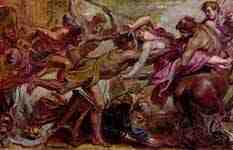
Rape of Hippodamia
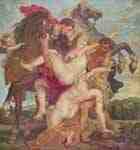
Rape of the Daughters of Leucippus
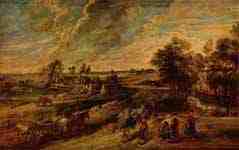
Return of the farmers from the field
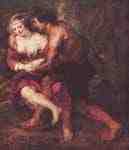
Shepherd scene
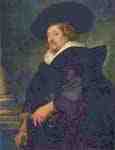
Self-portrait
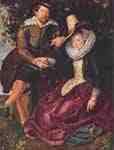
Self-portrait of the painter and his wife Isabella Brant
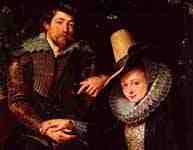
Self-portrait of the painter and his wife Isabella Brant , detail
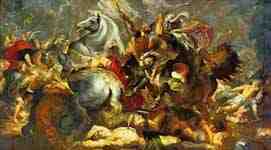
Victory and death of the consul Decius Mus
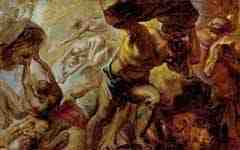
Overthrow of the Titans
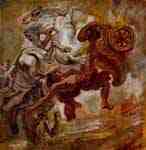
Fall of Phaethon
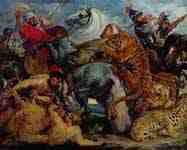
Tiger and lion hunting
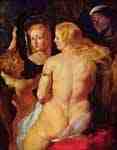
Toilet of Venus
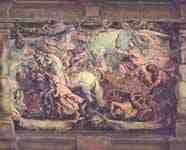
Triumph of the Church on the idolatry
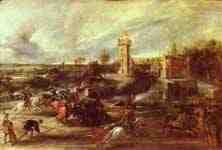
Tournament at a castle
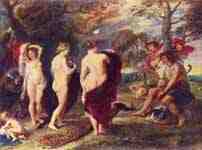
Judgment of Paris
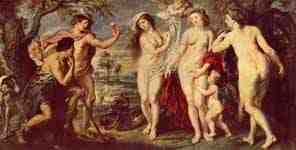
Judgment of Paris
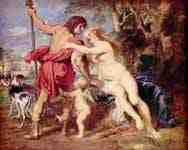
Venus and Adonis
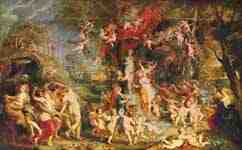
Feast of Venus
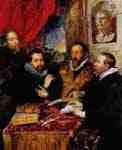
Four Philosophers
Drawings
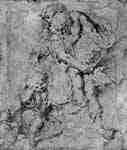
Aeneas and Anchises

Nude
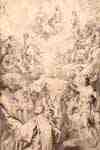
All Saints' Day

Altar Design

Anatomical studies leg
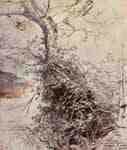
Tree with brambles
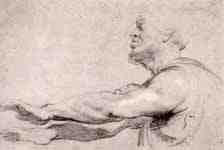
Blind man
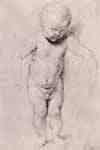
The Christ Child

Devotion to Mary
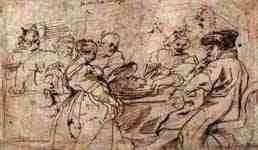
The Feast of Herod
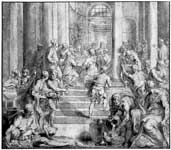
The Last Supper
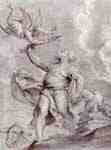
The sacrifice of Abraham

St. Onofre and a Monk
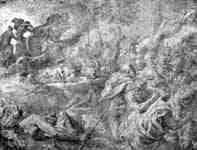
Rape of cattle
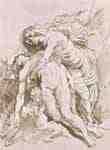
The Death of Adonis
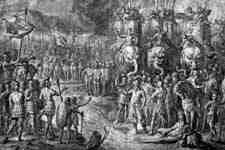
Scipio and Hannibal
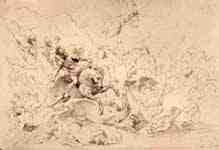
The defeat of Sennacherib
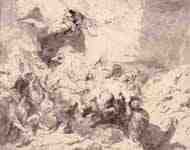
The defeat of Sennacherib
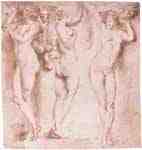
Three caryatids
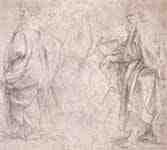
Three men in long robes
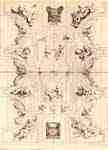
Ceiling design
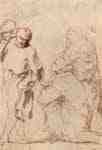
Figure study
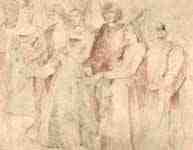
Burgundy

Genius with escutcheon
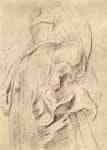
Robe study
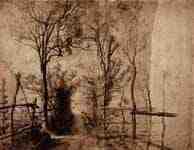
Rear path

Executioner with sword
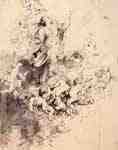
Assumption of Mary
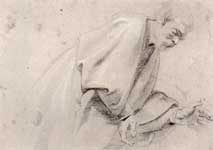
St. Joseph

St. Catherine of Alexandria
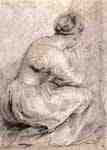
Girl squatting
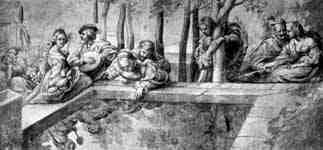
Courtly society

Young woman with a Strauss fan
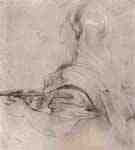
Young woman with bowl
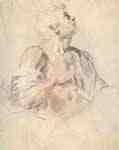
Young man with sword
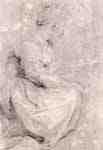
Crouching shepherd girl
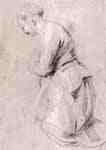
Kneeling woman
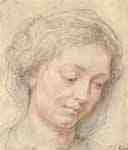
Head of a Woman

Head of a Woman

Head of a Woman

Bishop head
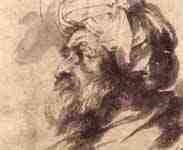
man's head
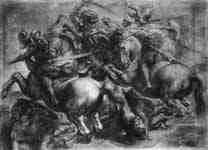
Copy after Leonardo's Battle of Anghiari
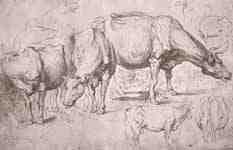
Cows
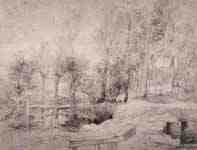
Landscape with trees
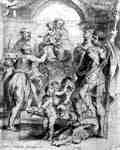
Madonna of St. George
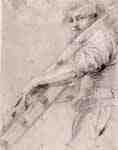
Man carrying a ladder
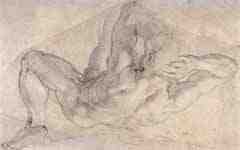
Nude Man
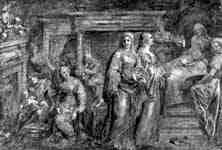
Nativity of Mary

Mary in Glory

Annunciation
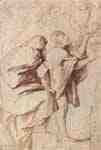
Melchizedek and Elijah
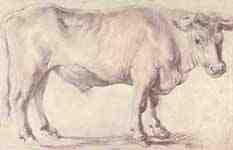
Ox
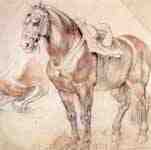
Equine studies
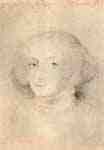
Catherine Manners
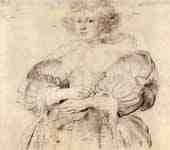
Portrait of Hélène Fourment
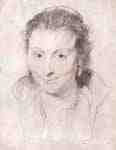
Portrait of Isabella Brant
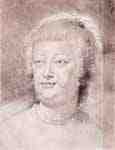
Portrait of Maria de ' Medici
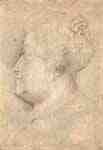
Portrait of Maria de ' Medici
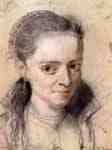
Portrait of Susanna Fourment
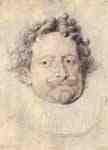
Don Diego Messia
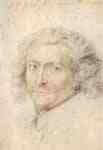
Georges Villiers
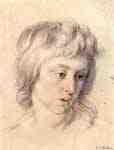
Portrait of boy
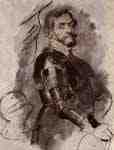
Portrait of Thomas Howard, Earl of Arundel
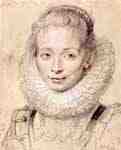
Portrait of a young woman (Lady in Waiting of the Infanta Isabella , or the artist's daughter Clara Serena ? )
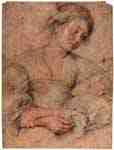
Portrait of a young woman
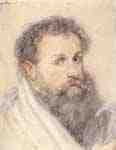
Portrait of a man
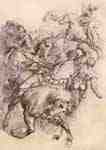
Cavalry Battle

Roma Triumphans
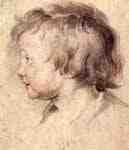
Rubens son Albert
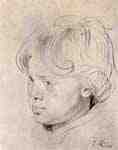
Rubens son Nicholas
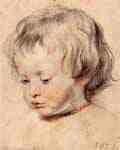
Rubens son Nicholas
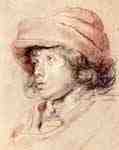
Rubens son Nicholas
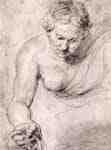
Female figure

Seated old man
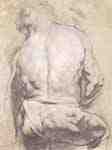
Study of a male figure , back view

Study of a Young Man
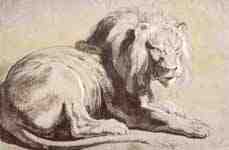
Study of a lion
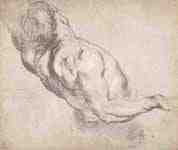
Study of a male torso

Study of Daniel in the lions' den
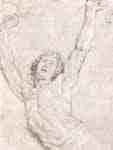
Study for a figure of Christ
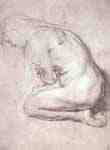
Study for a St. Mary Magdalene
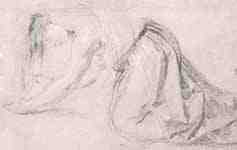
Study for a Mary Magdalene
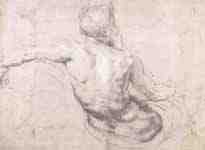
Study for a river god
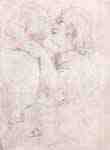
Studies for Apostles
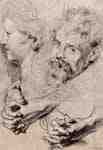
Study sheet
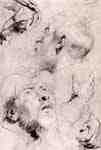
Study sheet
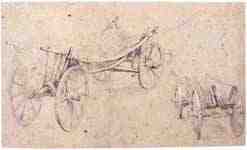
Two farm wagons
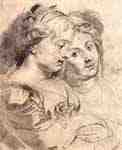
Two young women with dog
Illustrations
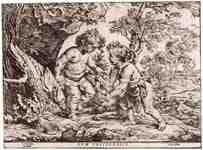
The Christ Child and John playing with a Lamb
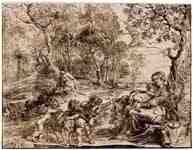
The Flight into Egypt
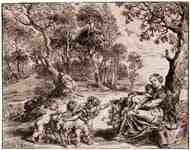
The Flight into Egypt
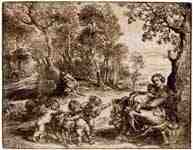
The Flight into Egypt
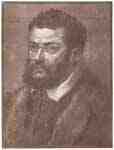
Portrait of Giovanni Cornaro
Buy Fine Art Prints | Greeting Cards | iPhone Cases
Sir Peter Paul Rubens (Dutch pronunciation: ['rybə(n)s]; 28 June 1577 – 30 May 1640) was a prolific seventeenth-century Flemish Baroque painter, and a proponent of an extravagant Baroque style that emphasized movement, color, and sensuality. He is well-known for his Counter-Reformation altarpieces, portraits, landscapes, and history paintings of mythological and allegorical subjects.
In addition to running a large studio in Antwerp that produced paintings popular with nobility and art collectors throughout Europe, Rubens was a classically educated humanist scholar, art collector, and diplomat who was knighted by both Philip IV, King of Spain, and Charles I, King of England.
Biography
"Rubens and Isabella Brant in the Honeysuckle Bower", 1609–10. Alte Pinakothek, Munich.
Early life
Rubens was born in Siegen, Westphalia, to Jan Rubens and Maria Pypelincks. His father, a Calvinist, and mother fled Antwerp for Cologne in 1568, after increased religious turmoil and persecution of Protestants during the rule of the Spanish Netherlands by the Duke of Alba. Jan Rubens became the legal advisor (and lover) to Anna of Saxony, the second wife of William I of Orange, and settled at her court in Siegen in 1570. Following Jan Rubens' imprisonment for the affair, Peter Paul Rubens was born in 1577. The family returned to Cologne the next year. In 1589, two years after his father's death, Rubens moved with his mother to Antwerp, where he was raised as a Catholic. Religion figured prominently in much of his work and Rubens later became one of the leading voices of the Catholic Counter-Reformation style of painting.[1]
In Antwerp, Rubens received a humanist education, studying Latin and classical literature. By fourteen he began his artistic apprenticeship with Tobias Verhaeght. Subsequently, he studied under two of the city's leading painters of the time, the late Mannerist artists Adam van Noort and Otto van Veen.[2] Much of his earliest training involved copying earlier artists' works, such as woodcuts by Hans Holbein the Younger and Marcantonio Raimondi's engravings after Raphael. Rubens completed his education in 1598, at which time he entered the Guild of St. Luke as an independent master.[3]
Italy (1600–1608)
Equestrian Portrait of the Duke of Lerma, 1603, Museo del Prado, Madrid. Painted during Rubens's first trip to Spain in 1603.
The Virgin and Child Adored by Angels, 1608, oil on slate and copper. This is the central panel depicting The Virgin and Child Adored by Angels above the High Altar, Santa Maria in Vallicella, Rome.
In 1600, Rubens travelled to Italy. He stopped first in Venice, where he saw paintings by Titian, Veronese, and Tintoretto, before settling in Mantua at the court of Duke Vincenzo I of Gonzaga. The coloring and compositions of Veronese and Tintoretto had an immediate effect on Rubens's painting, and his later, mature style was profoundly influenced by Titian.[4] With financial support from the Duke, Rubens travelled to Rome by way of Florence in 1601. There, he studied classical Greek and Roman art and copied works of the Italian masters; the Hellenistic sculpture Laocoön and his Sons was especially influential on him, as was the art of Michelangelo, Raphael and Leonardo da Vinci.[5] He was also influenced by the recent, highly naturalistic paintings by Caravaggio. He later made a copy of that artist's Entombment of Christ, recommended that his patron, the Duke of Mantua, purchase The Death of the Virgin (Louvre),[6] and was instrumental in the acquisition of The Madonna of the Rosary (Kunsthistorisches Museum, Vienna) for the Dominican church in Antwerp. During this first stay in Rome, Rubens completed his first altarpiece commission, St. Helena with the True Cross for the Roman church of Santa Croce in Gerusalemme.
Rubens travelled to Spain on a diplomatic mission in 1603, delivering gifts from the Gonzagas to the court of Philip III. While there, he studied the extensive collections of Raphael and Titian that had been collected by Philip II.[7] He also painted an equestrian portrait of the Duke of Lerma during his stay (Prado, Madrid) that demonstrates the influence of works like Titian's Charles V at Mühlberg (1548; Prado, Madrid). This journey marked the first of many during his career that combined art and diplomacy.
He returned to Italy in 1604, where he remained for the next four years, first in Mantua and then in Genoa and Rome. In Genoa, Rubens painted numerous portraits, such as the Marchesa Brigida Spinola-Doria (National Gallery of Art, Washington, D.C.), and the portrait of Maria di Antonio Serra Pallavicini, in a style that influenced later paintings by Anthony van Dyck, Joshua Reynolds and Thomas Gainsborough.[8] He also began a book illustrating the palaces in the city. From 1606 to 1608, he was mostly in Rome. During this period Rubens received, with the assistance of Cardinal Jacopo Serra (the brother of Maria Pallavicini), his most important commission to date for the High Altar of the city's most fashionable new church, Santa Maria in Vallicella also known as the Chiesa Nuova.
The subject was to be St. Gregory the Great and important local saints adoring an icon of the Virgin and Child. The first version, a single canvas (now at the Musée des Beaux-Arts, Grenoble), was immediately replaced by a second version on three slate panels that permits the actual miraculous holy image of the "Santa Maria in Vallicella" to be revealed on important feast days by a removable copper cover, also painted by the artist.[9]
Rubens’ experiences in Italy continued to influence his work. He continued to write many of his letters and correspondences in Italian, signed his name as "Pietro Paolo Rubens", and spoke longingly of returning to the peninsula—a hope that never materialized.[10]
Infanta Isabella Clara Eugenia (1566–1633), 1615. Kunsthistorisches Museum, Vienna.
Antwerp (1609–1621)
Upon hearing of his mother's illness in 1608, Rubens planned his departure from Italy for Antwerp. However, she died before he made it home. His return coincided with a period of renewed prosperity in the city with the signing of Treaty of Antwerp in April 1609, which initiated the Twelve Years' Truce. In September of that year Rubens was appointed as court painter by Albert VII, Archduke of Austria and Infanta Isabella Clara Eugenia of Spain, the governors of the Low Countries. He received special permission to base his studio in Antwerp instead of at their court in Brussels, and to also work for other clients. He remained close to the Archduchess Isabella until her death in 1633, and was called upon not only as a painter but also as an ambassador and diplomat. Rubens further cemented his ties to the city when, on October 3, 1609, he married Isabella Brant, the daughter of a leading Antwerp citizen and humanist, Jan Brant.
In 1610, Rubens moved into a new house and studio that he designed. Now the Rubenshuis Museum, the Italian-influenced villa in the center of Antwerp accommodated his workshop, where he and his apprentices made most of the paintings, and his personal art collection and library, both among the most extensive in Antwerp. During this time he built up a studio with numerous students and assistants. His most famous pupil was the young Anthony van Dyck, who soon became the leading Flemish portraitist and collaborated frequently with Rubens. He also often collaborated with the many specialists active in the city, including the animal painter Frans Snyders who contributed the eagle to Prometheus Bound (illustrated below right), and his good friend the flower-painter Jan Brueghel the Elder.
Peter Paul Rubens and Frans Snyders, Prometheus Bound, 1611–12. Philadelphia Museum of Art.
Altarpieces such as The Raising of the Cross (1610) and The Descent from the Cross (1611–1614) for the Cathedral of Our Lady were particularly important in establishing Rubens as Flanders' leading painter shortly after his return. The Raising of the Cross, for example, demonstrates the artist's synthesis of Tintoretto's Crucifixion for the Scuola Grande di San Rocco in Venice, Michelangelo's dynamic figures, and Rubens's own personal style. This painting has been held as a prime example of Baroque religious art.[11]
Rubens used the production of prints and book title-pages, especially for his friend Balthasar Moretus, the owner of the large Plantin-Moretus publishing house, to extend his fame throughout Europe during this part of his career. With the exception of a couple of brilliant etchings, he only produced drawings for these himself, leaving the printmaking to specialists, such as Lucas Vorsterman.[12] He recruited a number of engravers trained by Goltzius, who he carefully schooled in the more vigorous style he wanted. He also designed the last significant woodcuts before the 19th century revival in the technique. Rubens established copyright for his prints, most significantly in Holland, where his work was widely copied through prints. In addition he established copyrights for his work in England, France and Spain.[13]
The Exchange of Princesses, from the Marie de' Medici Cycle. Louvre, Paris.
The Marie de' Medici Cycle and diplomatic missions (1621–1630)
Main article: Marie de' Medici cycle
In 1621, the Queen Mother of France, Marie de' Medici, commissioned Rubens to paint two large allegorical cycles celebrating her life and the life of her late husband, Henry IV, for the Luxembourg Palace in Paris. The Marie de' Medici cycle (now in the Louvre) was installed in 1625, and although he began work on the second series it was never completed.[14] Marie was exiled from France in 1630 by her son, Louis XIII, and died in 1642 in the same house in Cologne where Rubens had lived as a child.[15]
After the end of the Twelve Years' Truce in 1621, the Spanish Habsburg rulers entrusted Rubens with a number of diplomatic missions.[16] In 1624 the French ambassador wrote from Brussels: "Rubens is here to take the likeness of the prince of Poland, by order of the infanta" (Prince Władysław IV Vasa arrived in Brussels as the personal guest of the Infanta on September 2, 1624).[17][18]
Portrait of Władysław IV by Peter Paul Rubens, 1624
Between 1627 and 1630, Rubens's diplomatic career was particularly active, and he moved between the courts of Spain and England in an attempt to bring peace between the Spanish Netherlands and the United Provinces. He also made several trips to the northern Netherlands as both an artist and a diplomat. At the courts he sometimes encountered the attitude that courtiers should not use their hands in any art or trade, but he was also received as a gentleman by many. It was during this period that Rubens was twice knighted, first by Philip IV of Spain in 1624, and then by Charles I of England in 1630. He was awarded an honorary Master of Arts degree from Cambridge University in 1629.[19]
The Fall of Man 1628–29. Prado, Madrid.
Rubens was in Madrid for eight months in 1628–1629. In addition to diplomatic negotiations, he executed several important works for Philip IV and private patrons. He also began a renewed study of Titian's paintings, copying numerous works including the Madrid Fall of Man (1628–29).[20] During this stay, he befriended the court painter Diego Velázquez and the two planned to travel to Italy together the following year. Rubens, however, returned to Antwerp and Velázquez made the journey without him.[21]
His stay in Antwerp was brief, and he soon travelled on to London where he remained until April, 1630. An important work from this period is the Allegory of Peace and War (1629; National Gallery, London).[22] It illustrates the artist's strong concern for peace, and was given to Charles I as a gift.
While Rubens's international reputation with collectors and nobility abroad continued to grow during this decade, he and his workshop also continued to paint monumental paintings for local patrons in Antwerp. The Assumption of the Virgin Mary (1625–6) for the Cathedral of Antwerp is one prominent example.
Portrait of Hélène Fourment (Het Pelsken), c. 1630s. Kunsthistorisches Museum, Vienna.
Last decade (1630–1640)
Rubens's last decade was spent in and around Antwerp. Major works for foreign patrons still occupied him, such as the ceiling paintings for the Banqueting House at Inigo Jones's Palace of Whitehall, but he also explored more personal artistic directions.
In 1630, four years after the death of his first wife, the 53-year-old painter married 16-year-old Hélène Fourment. Hélène inspired the voluptuous figures in many of his paintings from the 1630s, including The Feast of Venus (Kunsthistorisches Museum, Vienna), The Three Graces (Prado, Madrid) and The Judgment of Paris (Prado, Madrid). In the latter painting, which was made for the Spanish court, the artist's young wife was recognized by viewers in the figure of Venus. In an intimate portrait of her, Hélène Fourment in a Fur Wrap, also known as Het Pelsken (illustrated left), Rubens's wife is even partially modelled after classical sculptures of the Venus Pudica, such as the Medici Venus.
The Château de Steen with Hunter, ca. 1635–8 (National Gallery, London)
In 1635, Rubens bought an estate outside of Antwerp, the Château de Steen (Het Steen), where he spent much of his time. Landscapes, such as his Château de Steen with Hunter (National Gallery, London) and Farmers Returning from the Fields (Pitti Gallery, Florence), reflect the more personal nature of many of his later works. He also drew upon the Netherlandish traditions of Pieter Bruegel the Elder for inspiration in later works like Flemish Kermis (c. 1630; Louvre, Paris).
Rubens died from gout on May 30, 1640. He was interred in Saint Jacob's church, Antwerp. The artist had eight children, three with Isabella and five with Hélène; his youngest child was born eight months after his death.
Rubens is known for the frenetic energy and lusty ebullience of his paintings, as typified by the Hippopotamus Hunt (1616).
Art
Rubens was a prolific artist. His commissioned works were mostly religious subjects, "history" paintings, which included mythological subjects, and hunt scenes. He painted portraits, especially of friends, and self-portraits, and in later life painted several landscapes. Rubens designed tapestries and prints, as well as his own house. He also oversaw the ephemeral decorations of the Joyous Entry into Antwerp by the Cardinal-Infante Ferdinand in 1635.
His drawings are mostly extremely forceful but not detailed; he also made great use of oil sketches as preparatory studies. He was one of the last major artists to make consistent use of wooden panels as a support medium, even for very large works, but he used canvas as well, especially when the work needed to be sent a long distance. For altarpieces he sometimes painted on slate to reduce reflection problems.
His fondness of painting full-figured women gave rise to the terms 'Rubensian' or 'Rubenesque' for plus-sized women. The term 'Rubensiaans' is also commonly used in Dutch to denote such women.
Workshop
Paintings can be divided into three categories: those he painted by himself, those he painted in part (mainly hands and faces), and those he only supervised. He had, as was usual at the time, a large workshop with many apprentices and students, some of whom, such as Anthony Van Dyck, became famous in their own right. He also often sub-contracted elements such as animals or still-life in large compositions to specialists such as Frans Snyders, or other artists such as Jacob Jordaens.
Value of works
At a Sotheby's auction on July 10, 2002, Rubens' newly discovered painting Massacre of the Innocents sold for £49.5million ($76.2 million) to Lord Thomson. It is a current record for an Old Master painting.
Notes
1. ^ Belkin (1998): 11–18.
2. ^ Held (1983): 14–35.
3. ^ Belkin (1998): 22–38.
4. ^ Belkin (1998): 42; 57.
5. ^ Belkin (1998): 52–57
6. ^ Belkin (1998): 59.
7. ^ Belkin (1998): 71–73
8. ^ Belkin (1998): 75.
9. ^ Jaffé (1977): 85–99; Belting (1994): 484–90, 554–56.
10. ^ Belkin (1998): 95.
11. ^ Martin (1977): 109.
12. ^ Pauw-De Veen (1977): 243–251.
13. ^ A Hyatt Mayor, Prints and People, Metropolitan Museum of Art/Princeton, 1971, no.427–32, ISBN 0691003262
14. ^ Belkin (1998): 175; 192; Held (1975): 218–233, esp. pp. 222–225.
15. ^ Belkin (1998): 173–175.
16. ^ Belkin (1998): 199–228.
17. ^ (English) "Peter Paul Rubens". www.nndb.com. http://www.nndb.com/people/895/000031802/. Retrieved 2008-08-27.
18. ^ (English) "Polonica". www.codart.nl. http://www.codart.nl/exhibitions/details2/412/. Retrieved 2008-08-27.
19. ^ Belkin (1998): 339–340
20. ^ Belkin (1998): 210–218.
21. ^ Belkin (1998): 217–218.
22. ^ [1].
The issue of souls in purgatory, c. 1635. Tournai Cathedral.
Sources
* Belkin, Kristin Lohse (1998). Rubens. Phaidon Press. ISBN 0-7148-3412-2.
* Belting, Hans (1994). Likeness and Presence: A History of the Image before the Era of Art. University of Chicago Press. ISBN 0226042154.
* Held, Julius S. (1975) "On the Date and Function of Some Allegorical Sketches by Rubens." In: Journal of the Warburg and Courtauld Institutes. Vol. 38: 218–233.
* Held, Julius S. (1983) "Thoughts on Rubens' Beginnings." In: Ringling Museum of Art Journal: 14–35. ISBN 0-916758-12-5.
* Jaffé, Michael (1977). Rubens and Italy. Cornell University Press. ISBN 0801410649.
* Martin, John Rupert (1977). Baroque. HarperCollins. ISBN 0064300773.
* Mayor, A. Hyatt (1971). Prints and People. Metropolitan Museum of Art/Princeton. ISBN 0691003262.
* Pauw-De Veen, Lydia de. "Rubens and the graphic arts." In: Connoisseur CXCV/786 (Aug 1977): 243–251.
Further reading
* Alpers, Svetlana. The Making of Rubens. New Haven 1995.
* Heinen, Ulrich, "Rubens zwischen Predigt und Kunst." Weimar 1996.
* Büttner, Nils, Herr P. P. Rubens. Göttingen 2006.
* Corpus Rubenianum Ludwig Burchard. An Illustrated Catalogue Raisonne of the Work of Peter Paul Rubens Based on the Material Assembled by the Late Dr. Ludwig Burchard in Twenty-Seven Parts, Edited by the Nationaal Centrum Voor de Plastische Kunsten Van de XVI en de XVII EEUW.
* Lilar, Suzanne, Le Couple (1963), Paris, Grasset; Reedited 1970, Bernard Grasset Coll. Diamant, 1972, Livre de Poche; 1982, Brussels, Les Éperonniers, ISBN 2-8713-2193-0; Translated as Aspects of Love in Western Society in 1965, by and with a foreword by Jonathan Griffin, New York, McGraw-Hill, LC 65-19851.
* Vlieghe, Hans, Flemish Art and Architecture 1585-1700, Yale University Press, Pelican History of Art, New Haven and London, 1998.
* Lamster, Mark, Master of Shadows: The Secret Diplomatic Career of the Painter Peter Paul Rubens, 2009. [2]

